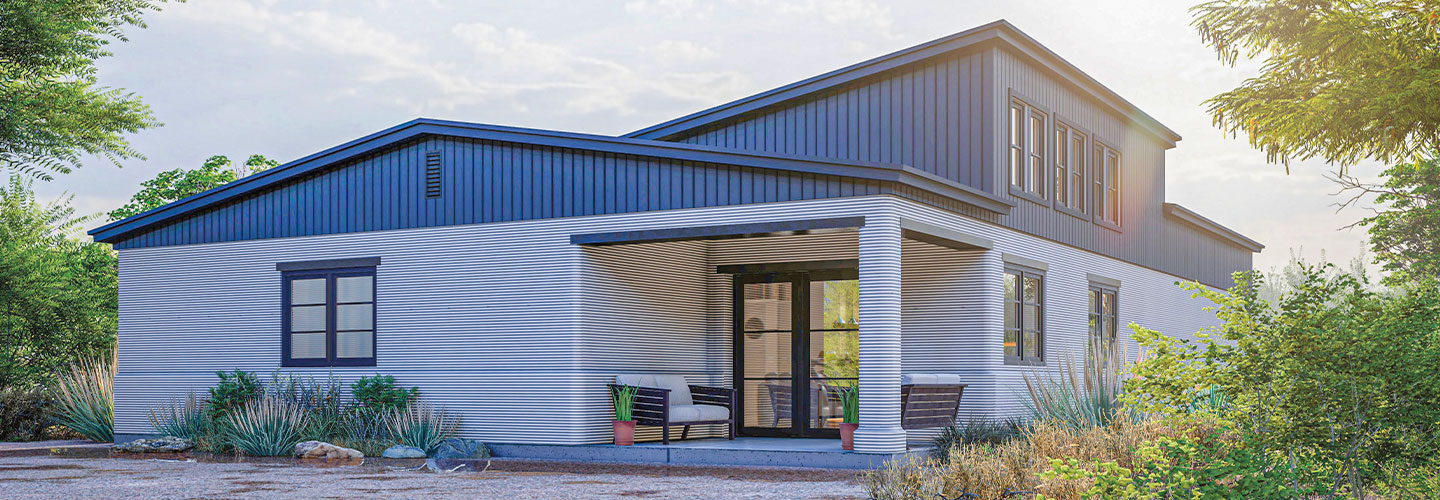On a hot day last May, Habitat for Humanity volunteers gathered around a cement slab in Tempe, Arizona. The organization, which operates in more than 70 countries around the world, builds affordable homes for families in need of a place to live. Since 1985, the Central Arizona chapter had already built more than 1,170 homes in the state. But this one would be different. As the volunteers watched, engineers from the German construction company PERI set up a 3-D printer. These devices print solid objects by building up layers of material. Desktop versions can create small items, like pencil holders, toys, or even prosthetic hands. But this 3-D printer was big enough to make a house!
The large construction printer had a nozzle that released a stream of cement specially formulated to be soft enough to pump through the printer but sturdy enough to hold its shape as it dries. “It comes out almost like soft serve ice cream,” says Dusty Parsons, one of Habitat for Humanity Central Arizona’s directors. As the nozzle slid back and forth, it deposited layer upon layer of cement, and the house’s walls rose before the volunteers’ eyes.
When 3-D printing experts first approached Habitat for Humanity with the idea of 3-D printing homes, the head of the chapter knew right away that they should try it. It was a natural next step, says Parsons, “because we are looking for new ways to provide affordable housing here in Arizona.” And the organization isn’t alone. Interest in 3-D printing for construction is growing as a potential way to solve a serious problem: a shortage of suitable homes for people around the world.
It was a hot day in May 2021. Habitat for Humanity volunteers gathered around a cement slab in Tempe, Arizona. The organization builds affordable homes for families who need a place to live. It operates in more than 70 countries around the world. Since 1985, the Central Arizona chapter had already built more than 1,170 homes in the state. But this one would be different. As the volunteers watched, engineers from the German construction company PERI set up a 3-D printer. These devices print solid objects by building up layers of material. Many 3-D printers fit on a desktop. They can create small items, like pencil holders, toys, or even prosthetic hands. But this 3-D printer was big enough to make a house!
The large construction printer had a nozzle that released a stream of cement. The material is mixed to be soft enough to pump through the printer. But it’s also sturdy enough to hold its shape as it dries. “It comes out almost like soft serve ice cream,” says Dusty Parsons. He’s one of Habitat for Humanity Central Arizona’s directors. As the nozzle slid back and forth, it laid down layer upon layer of cement. The house’s walls rose before the volunteers’ eyes.
3-D printing experts had approached Habitat for Humanity with the idea of 3-D printing homes. Right away, the head of the chapter knew that they should try it. Parsons says it was a natural next step, “because we are looking for new ways to provide affordable housing here in Arizona.” And the organization isn’t alone. Interest in 3-D printing for construction is growing. That’s because it could help solve a serious problem. There aren’t enough homes for people around the world.

